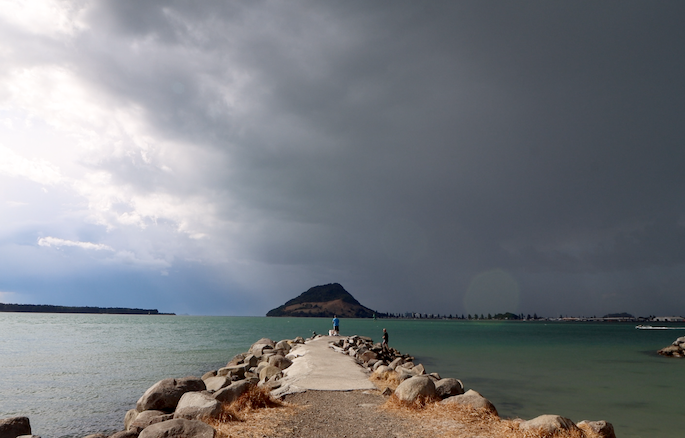There is a heightened chance that New Zealand will be affected by an ex-tropical cyclone during the upcoming Tropical Cyclone season of November to April.
New Zealand is typically affected by one ex-tropical cyclone on average each season, but according to the Tropical Cyclone Outlook released today the risk of impacts from an ex-tropical cyclone this coming season is elevated compared to normal.
In the Southwest Pacific, cyclone activity is forecast to be average to below average, with eight to ten named cyclones expected to occur. At least three of these may be severe, reaching category three or higher.
Every year MetService, New Zealand's official Tropical Cyclone Warning Centre (TCWC), works alongside NIWA, Australia's Bureau of Meteorology and national meteorological services from other Pacific nations to produce a Tropical Cyclone Outlook for the coming season.
MetService's TCWC manager and severe weather expert Chris Noble says this coming season, the El Niño Southern Oscillation (ENSO) cycle is expected to be in the cool La Niña phase, which is typically associated with average to below average cyclone activity in the South Pacific.
'During La Niña, cyclone activity is more likely in the west of the South Pacific, that is in and around the Coral Sea, especially late in the season from February to April.
'Although it is very rare for a tropical cyclone to form in the TCWC Wellington area of responsibility, intense tropical cyclones do arrive from the neighbouring Australia or Fiji warning areas and they can retain their named cyclone status as they approach New Zealand before being reclassified as an ex-tropical cyclone.
'Sometimes an ex-tropical cyclone may even cross New Zealand, such as the memorable cyclones Fehi and Gita in 2018 that brought severe weather along with storm surge and coastal inundation to parts of the country,” says Chris.
If cyclones are expected to impact New Zealand with severe weather, official advice will be provided via MetService's Severe Weather Outlooks, Watches and Warnings. Even if land areas are not affected, warnings are still issued for vessels over the open sea.
MetService will begin to issue its daily Tropical Cyclone Potential Bulletin from 1 November, or earlier if there is a pre-season development. The bulletin gives a five-day outlook and will be published on the Tropical Cyclone Activity page of the MetService website.
'All communities throughout the South Pacific, including New Zealand, are encouraged to prepare for the coming cyclone season and remain vigilant for developing cyclones or related severe weather. If severe weather is forecast, we urge the public to follow official advice from national meteorological services (in New Zealand that is MetService), disaster management offices or local civil defence,” advises Chris.
NIWA says elevated tropical cyclone presence is expected in and around the Coral Sea and north Tasman Sea, especially during the late season between February and April.
'Risk of a tropical cyclone interaction is expected to be higher across the maritime regions around New Caledonia, Norfolk Island and to the northwest of New Zealand. Reduced tropical cyclone activity is expected east of the International Dateline.
'Vanuatu and New Caledonia typically experience the greatest tropical cyclone activity, with an average of about two or three named cyclones passing close to those islands each year.”
For this season, elevated activity is expected for New Caledonia.
Near normal activity is expected for Tokelau, Fiji, Vanuatu, the Solomon Islands and Papua New Guinea. Normal or slightly reduced activity is expected for Tonga, Wallis and Futuna, and Samoa.
Most other islands to the east of the International Date Line are expected to have reduced tropical cyclone risk for the season.
'Despite the risk reduction in some places, cyclones are still expected for countries that typically experience one or more named cyclones per year. At least three severe cyclones reaching category 3 or higher might occur anywhere across the region, so all communities should remain prepared.”
On average, at least one ex-tropical cyclone passes within 550km of New Zealand each year.
'For the coming season, the risk for an ex-tropical cyclone affecting New Zealand is considered above normal. If an ex-tropical cyclone comes close to the country, there is a near-equal probability of it tracking to either the east or west of the North Island, and landfall of a degrading ex-tropical cyclone is possible.”



0 comments
Leave a Comment
You must be logged in to make a comment.